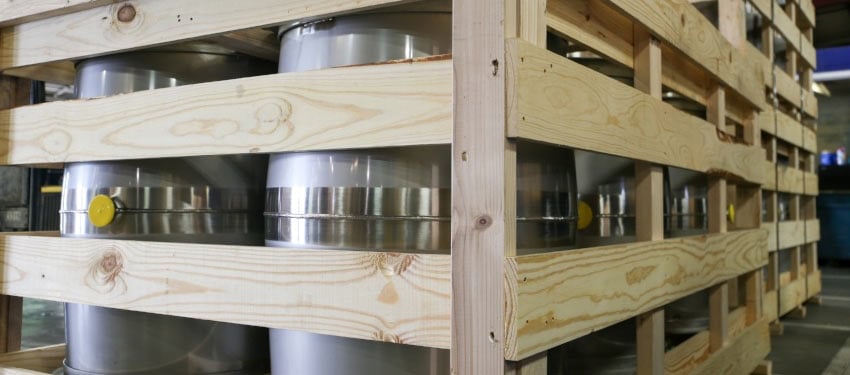In the world of wine aging and storing, French Oak barrels have long been considered the gold standard. But if you don’t want to pay a truckload of gold to buy and maintain these barrels over the years, you might be considering alternatives for your winery.
Bacteria Growth in Wine Barrels
Enter stainless steel.
In the 1950’s, renowned French enologist Emile Peynaud recommended using stainless steel barrels in wine-making:
“Peynaud, in his genial but persistent way, persuaded the Bordelaise that their viticultural and vinification practices were yielding oceans of plonk, and it was at his urging that they began picking riper fruit with softer tannins and threw away their old, bacteria-laden oak barrels”1
Peynaud had witnessed the success stainless steel had in the dairy industry and believed it could work for wine makers.
To his point about “bacteria-laden” oak barrels, there is scientific evidence to back that claim.
The National Institutes of Health when researching bacteria growth on wood vs. stainless found wood is better at resisting bacteria than stainless steel when set out untouched by any media or liquids. But once liquids are introduced they seep into the grain and will affect quality going forward:
“Wood is porous and thus impossible to decontaminate and sterilise.”2
And wine is highly acidic…that tends to corrode wood over time. Plus wood can more easily suffer scratches where wine can seep in and linger in those crevices, causing bacterial growth and influencing the taste of the next batch of wine you put in there.
Wine Flavor Considerations
Stainless steel barrels have a smooth surface, they last for decades without degrading and if “oakiness” is desired, oak chips, powder or staves can be added.
The University of Missouri Institute for Continental Climate Viticulture & Enology determined in a 2011 study that oak chips will perform just as well or better for short term aging of wines, but barrels are better for long term rounding of flavors.
Because stainless steel is a smooth surface, cleaning them is easier and more efficient.
Plus you don’t have to worry about what happens to the stainless steel barrel if it’s left empty. With oak barrels, an empty period could mean starting the curing process all over again. Plus, cleaning oak barrels can be very labor intensive. There’s rinsing, draining, SO2 rinsing, citric acid rinsing, re-sulfuring and so on.
Stainless steel barrels are neutral holders, they will allow the taste of the grape to shine through. Some advocates say that leads to a more fruit forward product. Oak barrels will impart an influence on the final outcome of the wine. Often that “oakiness” is accompanied by hints of vanilla, coffee or a roasted flavor.
Oak Vs. Steel Considerations
Efficiency and cost may not be the biggest influences for your wine-making. It depends on your end goal. If you are looking for that pure oak-infused flavor that can’t be achieved elsewhere, an oak barrel is probably the right aging choice for your winery. For a brighter, cleaner wine with neutral influence on your end results, stainless steel professional wine making equipment is the pure winner.
With Paul Mueller Company stainless steel wine barrels and stainless steel wine tanks, it's easy to grow your offerings and save money.
1 & 2, http://www.slate.com/articles/health_and_science/wines_world/2004/07/the_tastemaker.html


